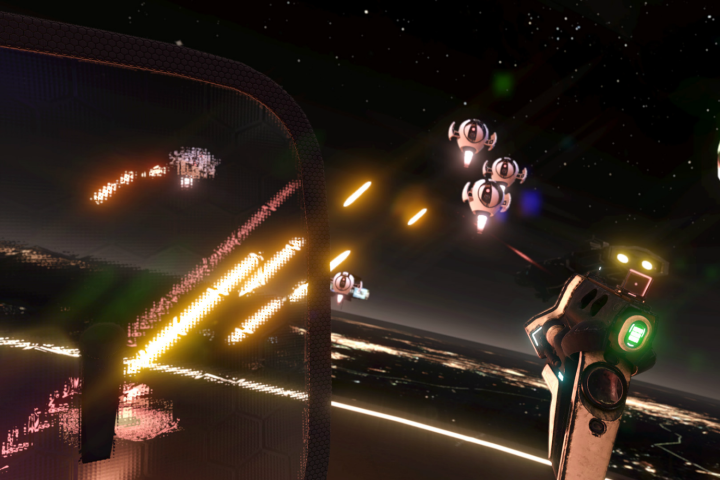
One of the biggest reasons we originally recommended the HTC Vive over the Oculus Rift was its improved support of what is known as room-scale play: The ability to physically walk around in virtual reality, as opposed to simply sitting in one place. While both headsets now offer solid support for it, room scale is still a major part of VR play as it increases immersion by leaps and bounds. But now it seems like it might make you a better gamer too.
This claim initially appeared in the Vive subreddit, where one of the top-scoring players of high-speed VR shooter, Space Pirate Trainer, suggested that they saw a huge increase in their score when transitioning to a larger play space. A 4-meter-by-3-meter play space enabled them to move around more, giving them more room to dodge projectiles — much more so than they could ever do in a 2-by-2.5-meter space.
Other users with larger play spaces also suggested they had seen improvements or drop-offs in their perceived skill when moving to and from bigger room-scale setups.
This anecdotal evidence is backed up by data from that same game. A look at the current and recent high scores for both HTC Vive and Oculus Rift users shows a significant difference in favor of the Vive. While there is always a chance that is due to improved tracking, the room-scale support for the Vive has been around longer and offers larger space tracking support than the Rift, especially if you are only using two Rift sensor setups.
This evidence is circumstantial and likely dependent on the game but it makes sense that when it comes to dodging enemies, if you have more real-world space to move in, you will have more virtual space too. Similarly, there must be increased confidence that comes from jumping around in a larger space, knowing you are not at risk of hitting walls or precious objects in your home.
However, it is worth pointing out that Space Pirate Trainer was playable on the Vive first, so it may be that Rift users do not play it as much because there was increased competition by the time it was ported over.



